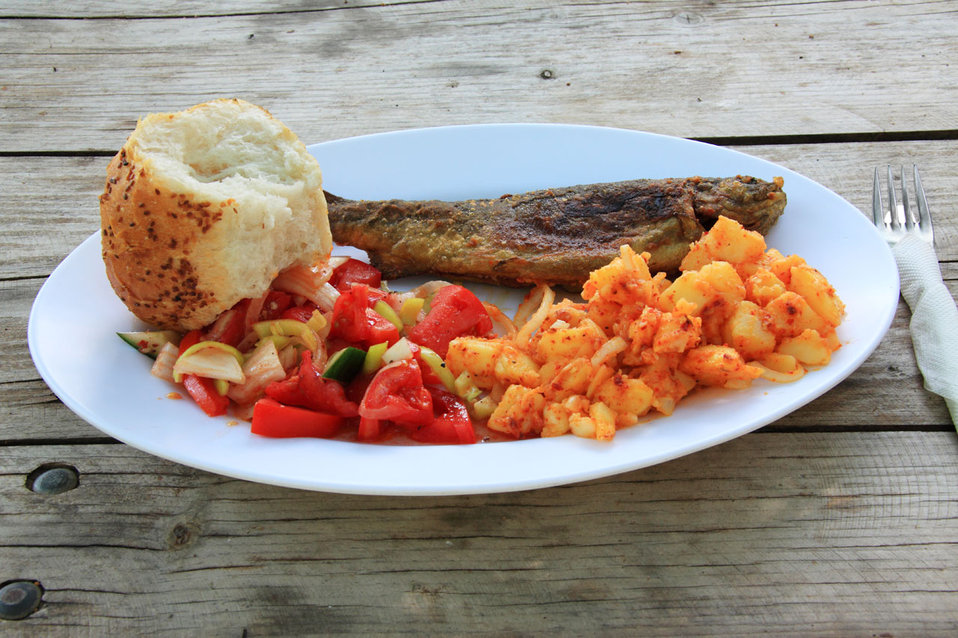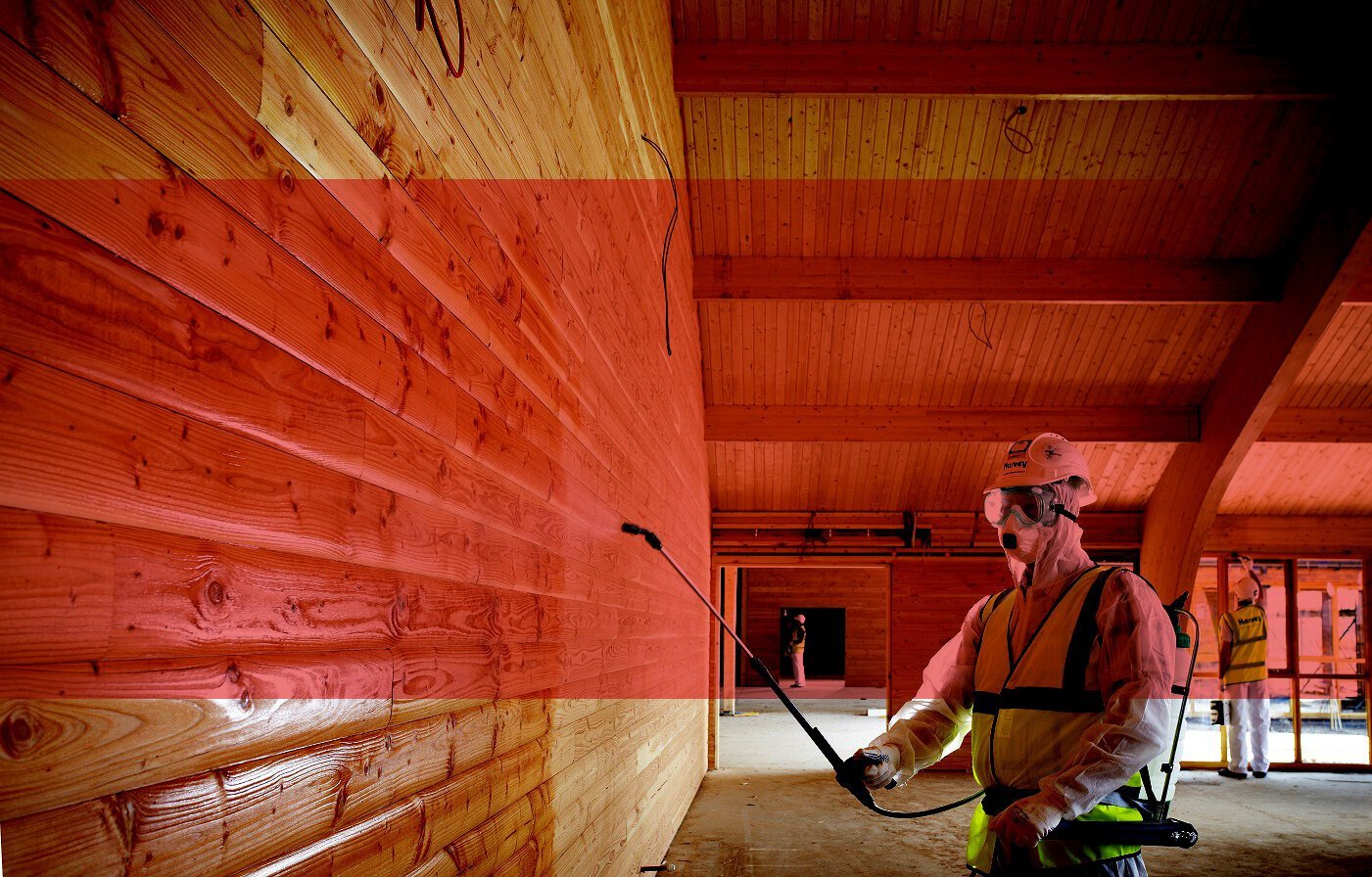The best removable and fixed dentures in 2024

Unfortunately, keeping all your teeth intact until old age is not possible. Over time, they undergo caries and other diseases and begin to deteriorate. When there is a complete loss of one or more teeth, the problem of prosthetics arises. There are many options for finding a new smile, so the rating of dentures will help you choose the best way. Removable and non-removable structures can be selected based on the state of the oral cavity.
What is a denture
To restore the oral cavity, a special dental construction is used, which is called a "denture". It helps to restore the original appearance and even make it more attractive. Also, with the help of prosthetics, you can bring the oral cavity closer to a healthy look.
With the correct manufacture of an artificial dental structure, it does not bother a person in any way. Soon, full adaptation takes place and the patient perceives the denture as his natural jaw.
Bridges can be installed both in the case of a complete absence of their teeth, and in the event of their partial loss. Installation of the bridge is carried out in several stages. First, preparation is carried out, during which treatment is carried out, the deposits of tartar and plaque are removed. When the recovery is completed, an impression of the jaw is made, according to which the prosthesis is made. The finished structure is tried on to the patient and, in case of successful manufacture, the product is fixed.
What are the dentures
There are several types of dental prostheses. To begin with, it should be noted that they all fall into two broad categories.
Fixed prostheses
Fixed dentures are fixed on the jaw and are worn constantly, without removing. Such prostheses, as a rule, are removed only in emergency cases, for example, in case of breakage, wear, or inflammation that has begun under the dental structure.
In terms of cost, fixed dentures are much more expensive than removable structures. The quality of the material used in the manufacture of the product plays an important role here, which ultimately affects the durability.

- the prosthesis is securely fixed;
- fits snugly to the gums;
- dentures are installed by a specialist using high-quality equipment;
- convenience and durability;
- attractive aesthetic appearance;
- you can take care of non-removable structures in the same way as in the usual case.
- cannot be used if many teeth are missing;
- difficult to install.
Removable dentures
Removable dentures can be pulled out. This can be done not only by the dentist, but also by the patient himself.

- you can put on and take off completely independently;
- attractiveness and aesthetics of appearance;
- inexpensive.
- are fixed unreliably and may fall out at the wrong moment;
- it is contraindicated to eat too hard and solid food;
- with constant wearing, the structure wears out and deforms;
- thorough cleaning is necessary after every meal.
The doctor helps you to choose the appropriate prosthetics option. In this case, all possible factors are taken into account: visible problems, pros and cons of structures. Of course, the decisive word when choosing a method of prosthetics rests with the patient himself.
Varieties of fixed prostheses
Let's take a closer look at what options are available for fixed dental structures.
Crowns
The most simple method of fixed prosthetics is a crown. With their help, you can completely restore the tooth in the event that the root remains, and it itself is completely destroyed. Crowns are made of metal, cermets, ceramics or metal-plastic. It is preferable to use materials with ceramics. They are durable and create the most natural look possible. It should be borne in mind that a ceramic crown is more expensive than a metal-ceramic crown.
Metal crowns
This option is considered the most economical. To install a metal crown, you do not need to sharpen the dental tissue too much. On the other hand, such a crown looks unattractive and lasts only a few years.

The average price of a metal crown is from 3600 rubles.
Cermet crowns
Such structures have good strength and are able to cope with heavy loads when chewing. Their service life is about 15 years. But at the same time, the installation of such a crown requires a strong turning of the dental tissue, since the thickness of the cermet is significant. In addition, such crowns differ from the native jaw in shade.
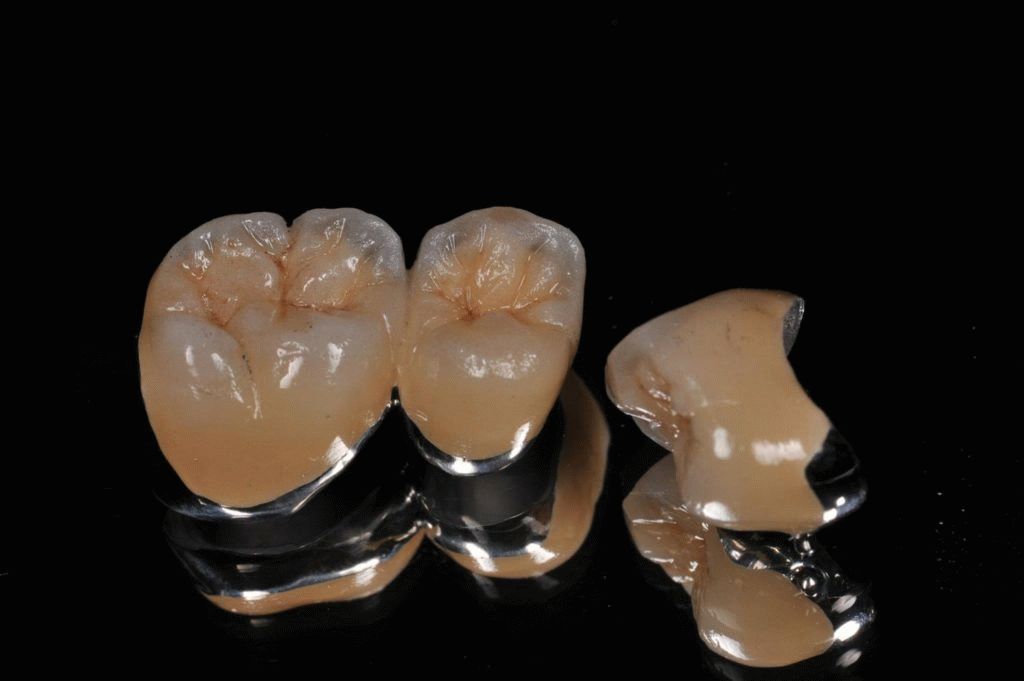
The average price of a metal-ceramic crown is from 4000 rubles.
Ceramic crowns
The main advantage of ceramic crowns is their complete naturalness. The shade and shine of ceramics are completely similar to natural teeth. The framework of such crowns is quite thin, so when installing them, you do not need to grind a lot of fabric. At the same time, this material is fragile, which affects the cost of the structure.

The average price of a ceramic crown is from 15,000 rubles.
Metal-plastic crowns
For the manufacture of crowns of this type, a special alloy is used, which perfectly matches the gum tissue. These crowns are inexpensive and can be produced quickly. The plastic can be matched to the shade of the jaw. Most often, metal-plastic structures are used to create bridge-type prostheses. The disadvantage of this design is its low strength.
The average price of metal-plastic crowns is from 3000 rubles.
As you can see, there are a lot of varieties of crowns. Therefore, in order to make the right decision, follow a few rules:
- Crowns in the visible part of the mouth are best made of cermet or all-ceramic.
- If a person has high sensitivity, then it is better to use ceramics that are not rejected by the body.
- Metal crowns are the strongest, but they are not aesthetic and do not fit the visible part of the mouth.
Dental tabs
This type of prosthetics is used when the tooth is mostly destroyed and needs to be restored. It is installed as a seal. The inlay is made of ceramics or cermets, has high stability and is almost invisible from the side. The tabs are strong enough and hold well on the jaw, but on the other hand, over time, very small cracks form on them, which allow microbes to penetrate inside. In the presence of some forms of caries, it is not possible to install such a microprosthesis.

The average price of a tab starts at 6,000 rubles.
Veneers and Lumineers
In the case when there are minor injuries on the tooth and this tooth is located in the front of the jaw, microprosthetics with a veneer is possible. This element is a thin ceramic plate that is very similar to natural human teeth. With proper care, veneers will last for a long time. The ceramics used to make this piece have excellent resistance to food coloring, so the veneer does not change color. When installing these microprostheses, it is also necessary to grind the dental tissue, but only slightly.

Lumineer is also a porcelain plate overlaid on the tooth. The thickness of this fixture is only 0.2 mm, so turning is often unnecessary to install the lumineer. With the help of veneers and lumineers, cosmetic defects of the jaw are usually eliminated, which do not require serious intervention. They are also used just to get a beautiful smile.
The average price of veneers is from 12,000 rubles.
Implants
This type of dental prosthetics is one of the most modern. In this case, a special artificial root is implanted into the jawbone, on which a denture or a separate crown is subsequently installed. Implants allow you to fully restore chewing functions and look aesthetically attractive. This does not require turning the adjacent teeth. The implant can be installed even if there are no adjacent teeth.

The average price of an implant is 13,500 rubles.
Demonstration of implant installation:
Bridge prostheses
This dental construction covers several teeth at once. Healthy, ground human teeth serve as a support for a dental bridge. This type of prosthetics is now used quite rarely, as it has many disadvantages. First of all, with this method of prosthetics, it is necessary to spoil perfectly healthy teeth by grinding tissue from them and removing nerves. As a result, it becomes dead and quickly collapses. In addition, there is a change in the chewing load, since the bridge does not load the jaw.

There are several options for bridges:
- based on healthy human teeth;
- based on implants;
- use of an adhesive bridge construction.
The last two options reduce the negative impact on natural teeth, therefore they are used more often. Moreover, this design completely replaces the natural jaw, including with respect to the chewing function. For the manufacture of the bridge, special materials are used that do not change their color during operation.
Prosthetics with bridges is possible even if your teeth are completely missing. In this case, adhesive structures can be used. Such a bridge is attached with special glue. Even if a part of the bridge falls out, its integrity is restored in one session.
Bridges do not require addiction and do not alter the taste of food. Since bridges are made strictly individually, their shape and color are fully consistent with natural teeth.
The price for such a denture depends on the material used and the type of bridge. But we can say unequivocally that bridges are much cheaper than implants.
The average price for a bridge prosthesis of three crowns is from 22,000 rubles.
More information about such prostheses is in the video:
Varieties of removable dentures
If for some reason it is not possible to install permanent prostheses, then you can restore the aesthetics of the oral cavity and improve chewing functions using a removable option. This type of prosthetics is divided into two types:
- Partially removable dental prostheses are used when it becomes necessary to restore two or more teeth. Absent specimens may be on one jaw or on different sides. In this case, it is important to have several native teeth, which will serve as a support for the prosthesis.
- Fully removable dentures are a plate that completely repeats the shape of the gums.
Acrylic dentures
Acrylic dental construction is considered the most common. Such products are very lightweight, they do not require teeth turning. Special hooks are used to attach the acrylic denture. Acrylic plastic does not have any contraindications, therefore, constructions made from it can be used for all patients. Externally, the acrylic denture is not visible. I am glad that the price of such a product is very affordable.

At the same time, it will take several weeks to get used to an acrylic denture. All this time, a person is actively salivating. There may be speech disturbances or changes in taste. Sensitive people may experience signs of allergies during the habituation period.
The average price of an acrylic denture is from 9,000 rubles.
About the pros and cons of such prostheses - in the video:
Acrylic-free dentures
The main difference between these products and the previous ones is in the material used. It does not contain substances that irritate the gums. In addition, these prostheses are more durable, distribute the load more evenly and better adhere to the gums. These structures can be attached to natural teeth using special rubber hooks. If you do not have your own teeth, then suction cups are used for fastening.
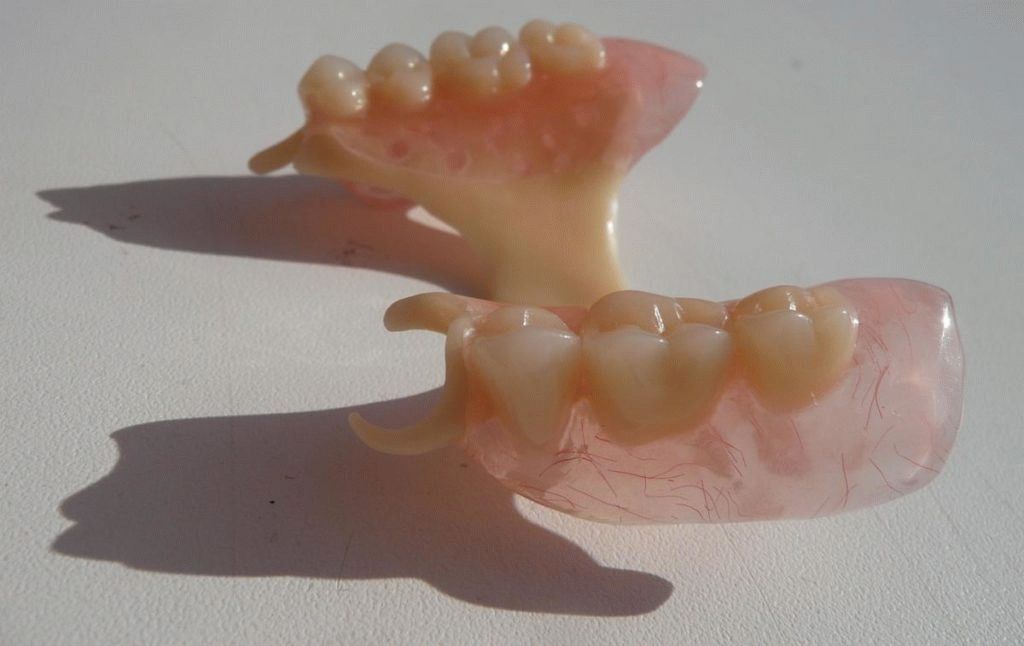
The average price of acrylic-free dentures is from 30,000 rubles.
Nylon dentures
This type of prosthetics is used quite rarely as they are quite expensive and can be used to restore only a small area of missing teeth. To attach a nylon denture, soft clamps are used that do not require the installation of a crown. As a result, the gums are not rubbed. This design is inconspicuous and has excellent antimicrobial properties. Nylon products don't take long to get used to.
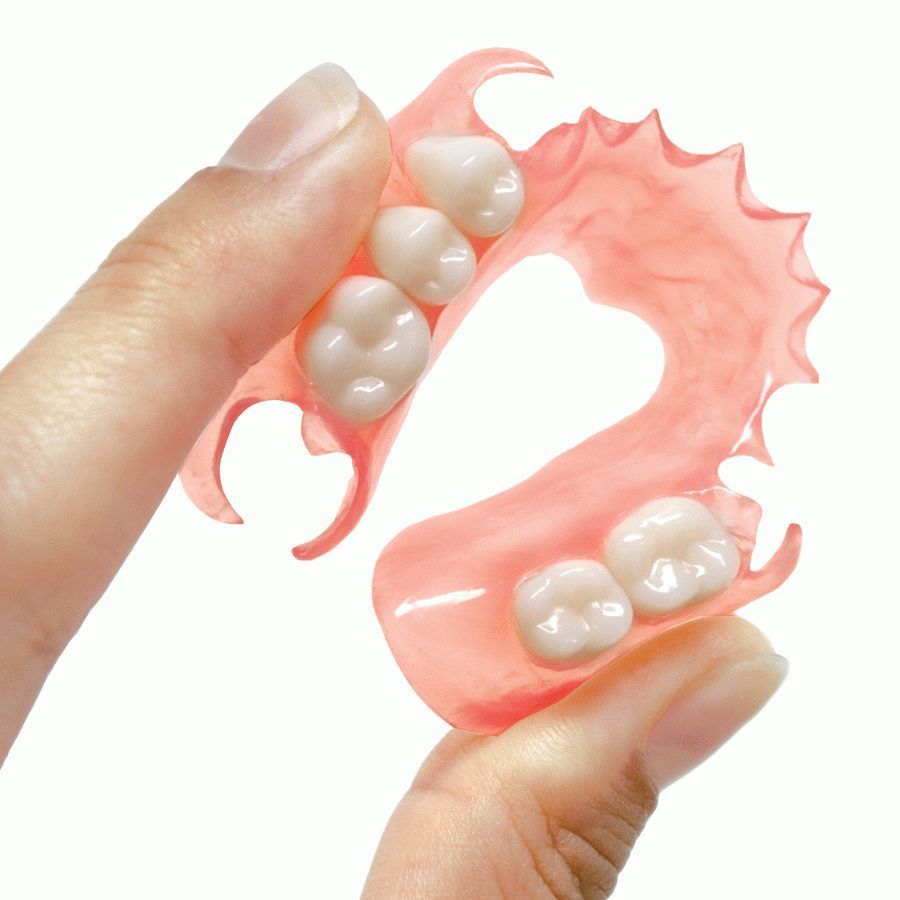
The main disadvantage of nylon dentures is that they do not properly distribute the chewing load. There is strong pressure on the gums and their rapid destruction. As a result, the gum sags and the abutment tooth deteriorates.
The average price of a nylon prosthesis is from 18,000 rubles.
Clasp prostheses
Such a product is a cast metal frame covered on top with a uniform layer of acrylic. Artificial teeth are installed on it.
In the mouth, the clasp construction takes up little space due to its small size. This denture provides a uniform load on the jaw and is invisible to outsiders. Hooks, micro-locks or special crowns are used to secure the structure. With the help of a clasp denture, teeth can be restored in all areas of the jaw. Clasp products do not need special care and do not take a long time to get used to. In addition, they have a very long service life - up to 15 years.
The average cost of clasp prostheses is from 26,000 rubles.
About clasp prostheses in detail - in the video:
Temporary dentures
In some cases, it becomes necessary to install temporary structures. Usually they are put on for a short time in the event that it is necessary to carry out a large amount of work on the installation of a permanent bridge. Then plastic crowns are used. They are much worse than cermets, but contribute to a more comfortable transfer of the preparatory stage. They reduce the susceptibility of living, sharpened teeth, and protect against cold and hot food and other irritants.
The average price for plastic crowns is from 500 rubles.
Modern dentistry presents a whole range of different solutions to restore the aesthetic appeal and chewing function of the oral cavity. The patient only needs to choose a solution that will completely suit him and solve the existing dental problems.
new entries
Categories
Useful
Popular articles
-

Top rating of the best and inexpensive scooters up to 50 cubic meters in 2024
Views: 97661 -

Rating of the best materials for noise insulation for an apartment in 2024
Views: 95022 -

Rating of cheap analogues of expensive drugs for flu and colds for 2024
Views: 91751 -

The best men's running shoes in 2024
Views: 87680 -

Top ranking of the best smartwatches 2024 - price-quality
Views: 85091 -

Best Complex Vitamins in 2024
Views: 84801 -

The best dye for gray hair - 2024 top ranking
Views: 82406 -

Rating of the best wood paints for interior use in 2024
Views: 77202 -

Ranking of the best action cameras from China in 2024
Views: 75269 -

Rating of the best spinning reels in 2024
Views: 74827 -

The most effective calcium supplements for adults and children in 2024
Views: 72462 -

Top rating of the best means for male potency in 2024 with a description
Views: 68296
